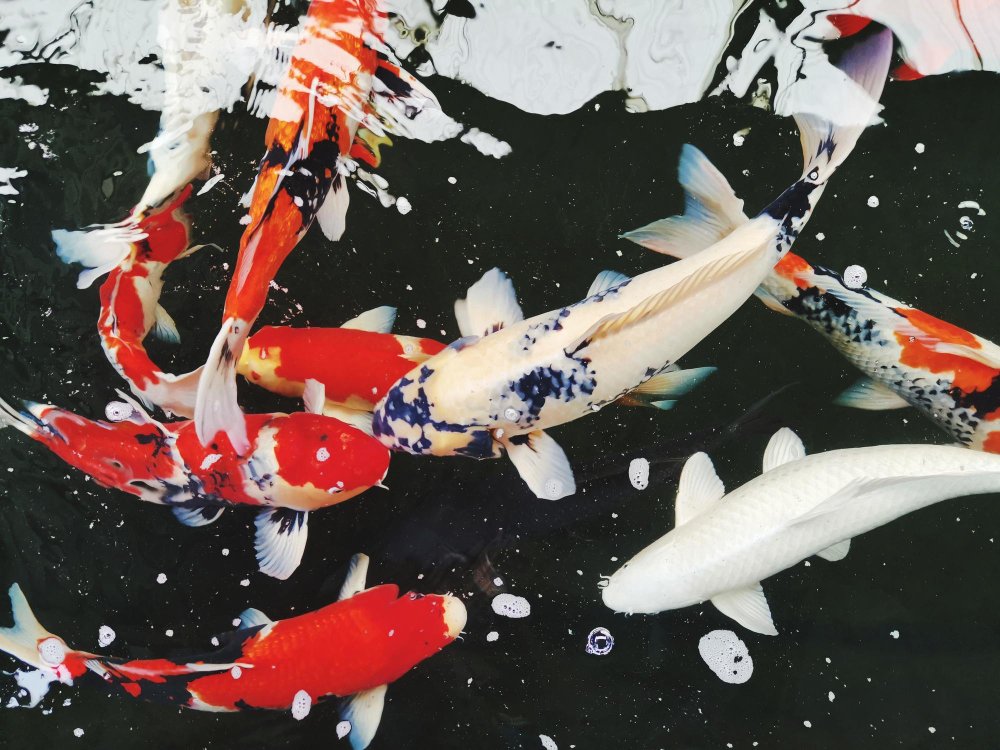
Cultural Significance of Koi Fish: A Symbol of Beauty, Resilience, and Prosperity
Koi fish, often seen gliding gracefully in serene ponds, are more than just aquatic ornaments—they’re living symbols of beauty, perseverance, and prosperity. Across different cultures, koi have become revered icons, representing various values and philosophies. Let’s dive into the rich tapestry of their cultural significance and discover why these vibrant creatures have fascinated humanity for centuries.
The Fascinating Origins of Koi Fish
Where It All Began: Natural Origins in East Asia
The story of koi fish begins with their ancestor, the humble common carp, which thrived in rivers and lakes across East Asia. Known for their resilience, these hardy fish were initially bred for food before becoming ornamental treasures.
The Birth of Nishikigoi: Japan’s Artistic Touch
In 19th-century Japan, farmers in the Niigata region began breeding carp with unique color patterns, creating the iconic Nishikigoi, or “brocaded carp.” These koi were a labor of love, reflecting the meticulous artistry and cultural pride of the Japanese people.
The Global Spread of Koi
From Japanese ponds to global gardens, koi fish have become universal symbols of elegance. Their journey across the world signifies their enduring appeal and ability to bridge cultural boundaries.
Koi Fish in Japanese Culture
A Symbol in Art and Literature
Koi fish frequently appear in Japanese paintings, poetry, and sculptures, embodying themes of grace, perseverance, and harmony. Their fluid movements inspire artists to capture their beauty and resilience.
Koi and Samurai Values
The samurai revered koi for their unwavering spirit. Just as koi swim upstream against strong currents, samurai embodied courage, resilience, and determination in their lives and battles.
Celebrations and Festivals: Koinobori
During Children’s Day in Japan, families fly koi-shaped streamers called koinobori to symbolize strength and hope for their children’s future.
The Universal Appeal of Koi Fish Cultural Significance of Koi Fish
Koi in Chinese Culture
In Chinese traditions, koi fish represent wealth, abundance, and marital harmony. They are often depicted in Feng Shui practices to attract prosperity and ensure balance in homes.
Western Fascination with Koi
Koi have captivated Western enthusiasts as symbols of peace, luxury, and sophistication. Their presence in modern gardens reflects a blend of Eastern philosophy and Western aesthetics.
Spiritual Symbolism Across Cultures
For many, koi symbolize transformation and perseverance. Their ability to swim against the current resonates with those seeking inspiration to overcome life’s challenges.
Symbolism of Koi Fish Colors Cultural Significance of Koi Fish
Kohaku (White and Red)
Representing purity and success, Kohaku koi stand out with their vibrant red patterns on a white background.
Ogon (Golden)
Golden koi are synonymous with wealth and prosperity. Their shimmering hue symbolizes financial success and good fortune.
Showa (Black, Red, and White)
Showa koi embody balance, representing strength (black), energy (red), and purity (white).
Asagi (Blue and Red)
The tranquil tones of Asagi koi symbolize peace and calm, making them a favorite among collectors seeking serenity.
The Role of Koi Ponds in Harmonizing Spaces
Feng Shui: Balancing Energy
In Feng Shui, koi ponds are believed to attract positive energy (chi) and promote harmony. The gentle flow of water combined with koi’s vibrant presence creates a space of balance and tranquility.
Modern Gardens: A Sanctuary of Peace
Koi ponds transform ordinary gardens into serene sanctuaries. Their aesthetic and calming influence make them a centerpiece of relaxation and mindfulness.
Legends and Myths: The Stories of Koi
The Dragon Gate Legend
One of the most famous koi legends comes from China, where koi swimming upstream to the Dragon Gate are said to transform into mighty dragons. This story symbolizes perseverance and the rewards of hard work.
Personal Transformation
Koi’s journey against strong currents serves as a metaphor for personal growth, inspiring people to overcome obstacles and embrace change.
Economic and Aesthetic Value of Koi Fish
The Billion-Dollar Koi Industry
Koi breeding has become a lucrative global industry. Rare koi with perfect patterns and colors can fetch millions of dollars, underscoring their status as living works of art.
Koi Auctions: A Collector’s Paradise
Elite koi auctions draw collectors from around the world, showcasing extraordinary specimens and fostering a thriving market for these aquatic gems.
Ethical Considerations for Koi Enthusiasts
Responsible Koi Ownership
Caring for koi requires commitment. Responsible owners provide clean, spacious ponds, proper nutrition, and regular health monitoring to ensure their koi thrive.
Sustainability in Koi Farming
Ethical breeding practices are essential to minimize the environmental impact of koi farming, ensuring the sustainability of these cherished fish.
Why Koi Fish Remain Symbols of Cultural Pride
Koi fish are more than just ornamental creatures; they are living symbols of hope, strength, and transformation. From their humble origins in East Asia to their global fame, koi have captivated people’s imaginations and become enduring icons of cultural significance.
FAQs Cultural Significance of Koi Fish
1. What do koi fish symbolize in Japanese culture?
Koi fish symbolize perseverance, courage, and prosperity, reflecting the values of resilience and strength.
2. Why are koi fish associated with wealth?
In Feng Shui and Chinese traditions, koi fish are believed to attract wealth and abundance due to their vibrant colors and graceful movement.
3. What are the most popular koi fish colors and their meanings?
Popular koi colors include Kohaku (success), Ogon (wealth), and Asagi (calmness), each carrying unique symbolic meanings.
4. How do koi ponds benefit a home’s energy?
Koi ponds bring harmony and tranquility, promoting positive energy flow and creating a relaxing environment.
5. What is the significance of the Dragon Gate legend?
The Dragon Gate legend symbolizes perseverance and transformation, as koi that swim upstream and reach the gate become powerful dragons.
You may also like
- https://giobelkoicenter.com/the-ultimate-guide-to-the-biggest-koi-fish/
- https://giobelkoicenter.com/koi-fish-lucky/
- https://giobelkoicenter.com/the-meaning-behind-koi-fish-colors/
- https://giobelkoicenter.com/the-most-expensive-koi-fish-ever-sold/
- https://giobelkoicenter.com/dumbo-ear-mosaic-guppies/
- https://giobelkoicenter.com/white-butterfly-koi/